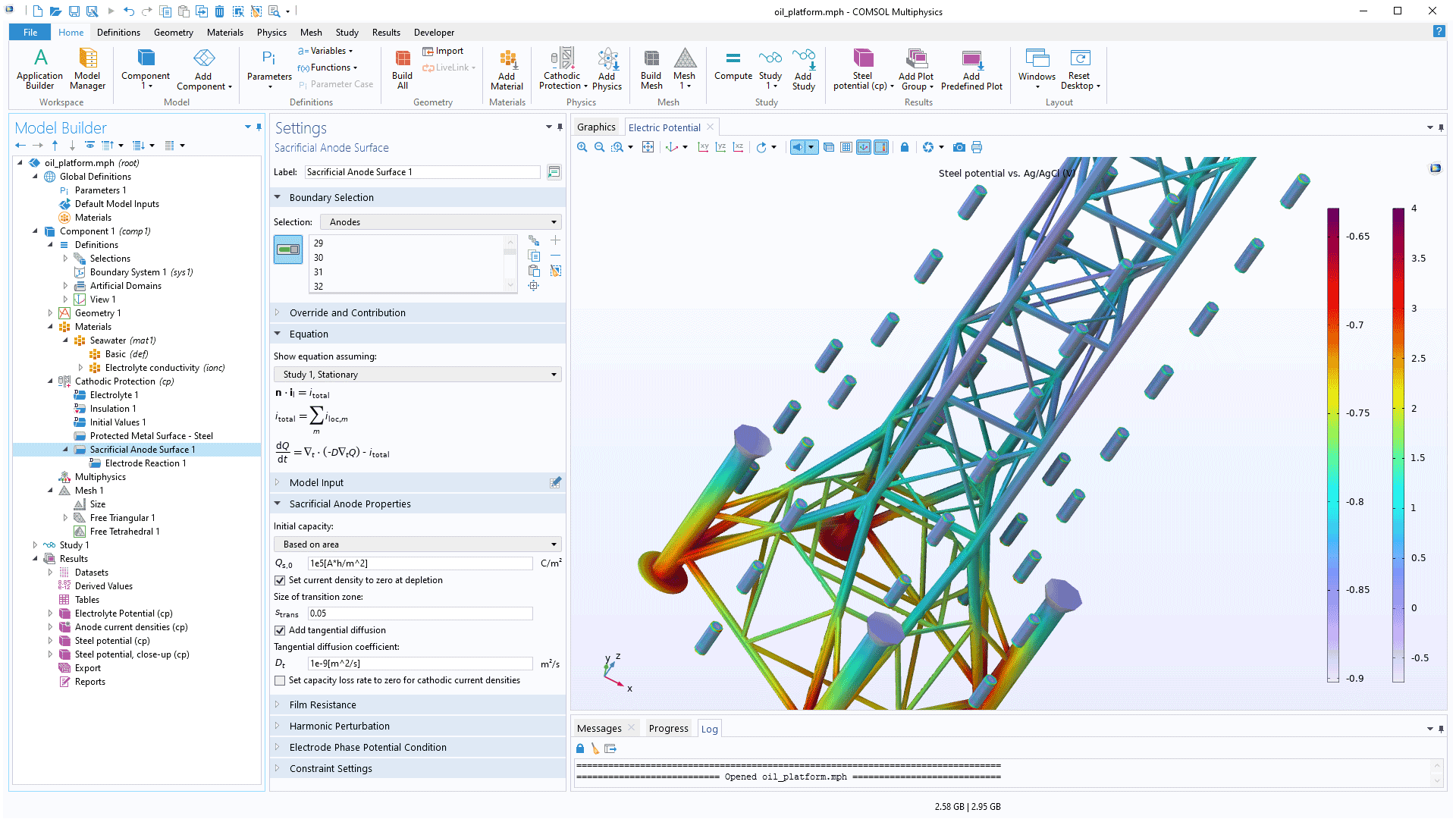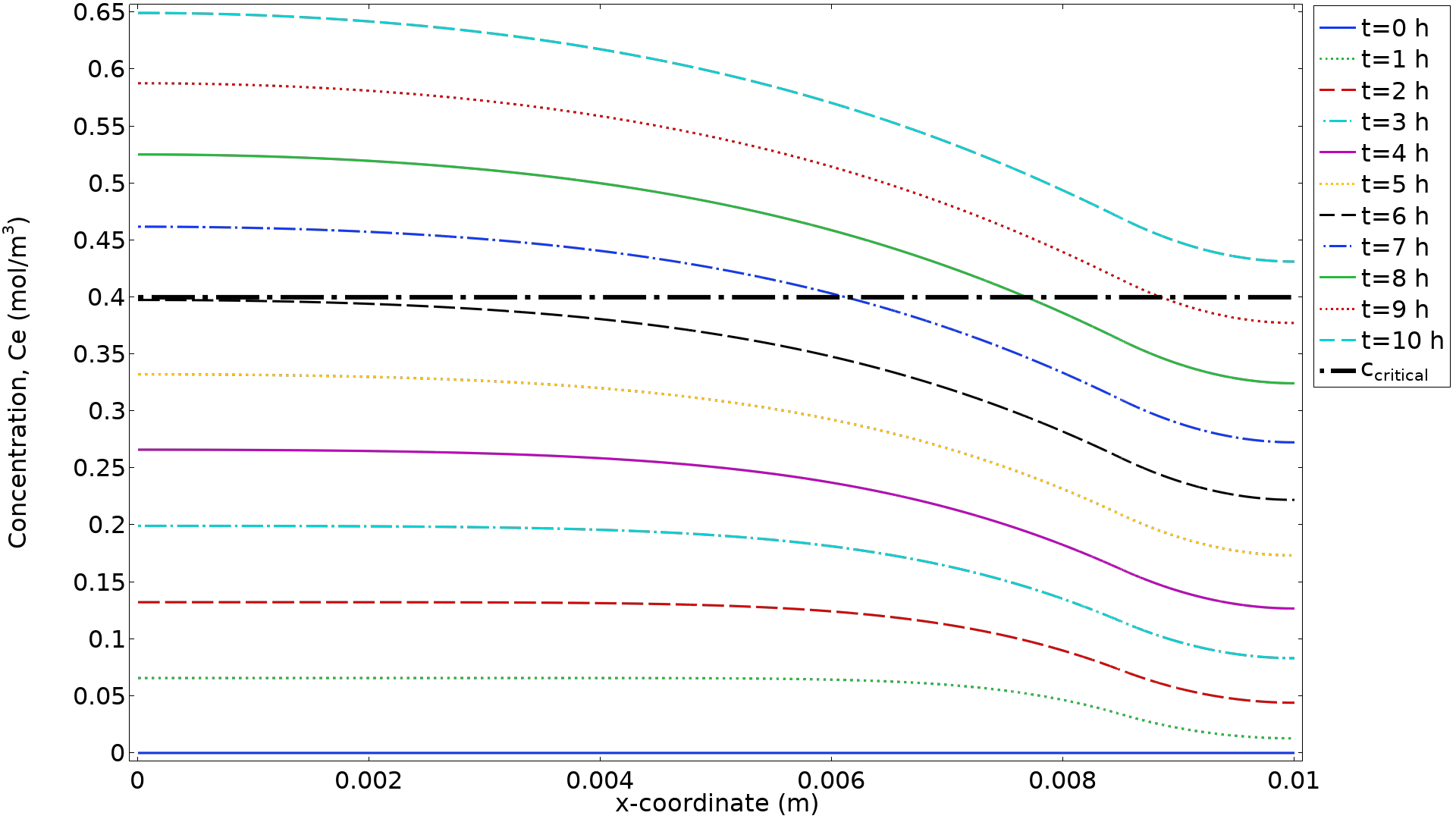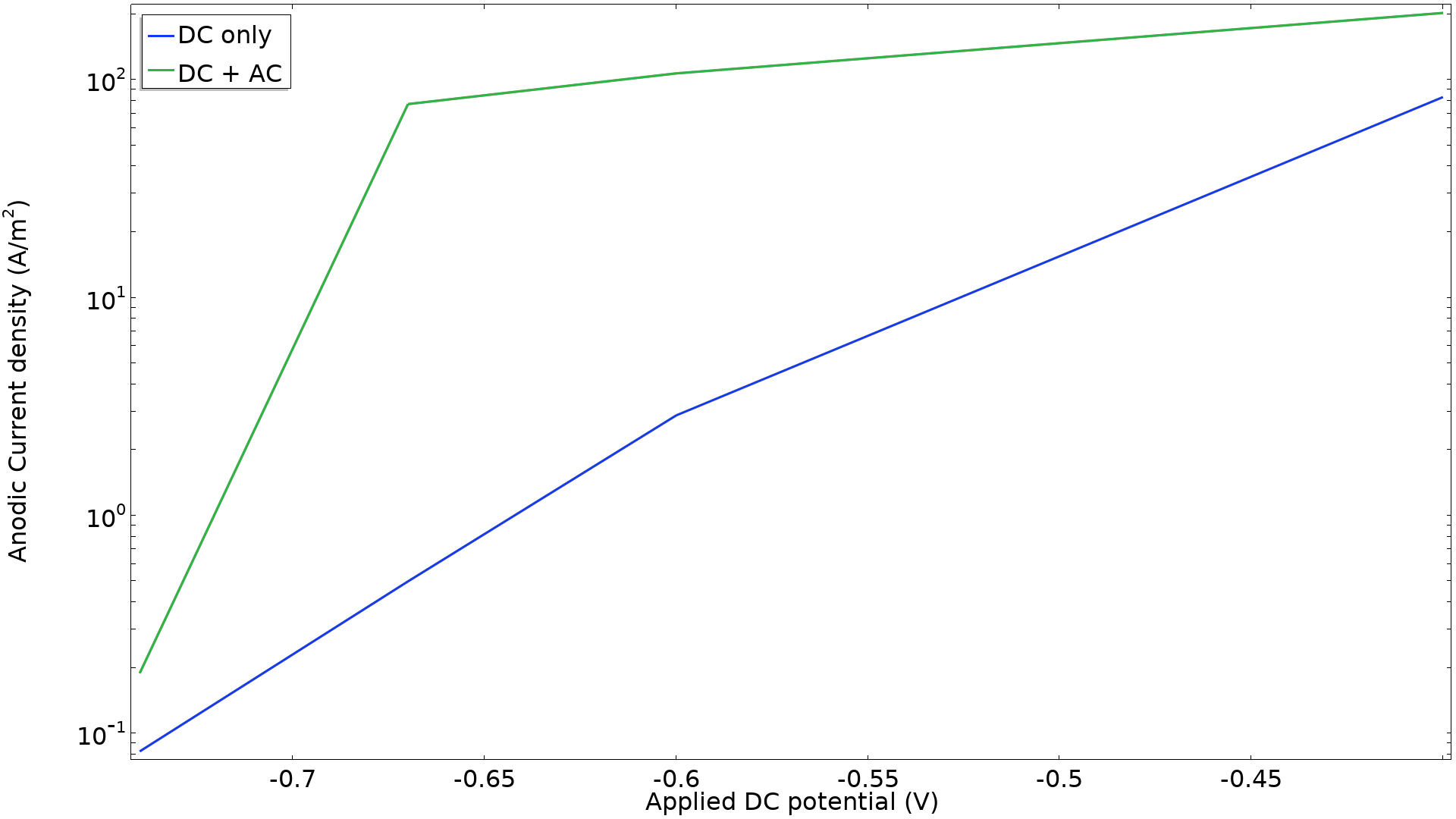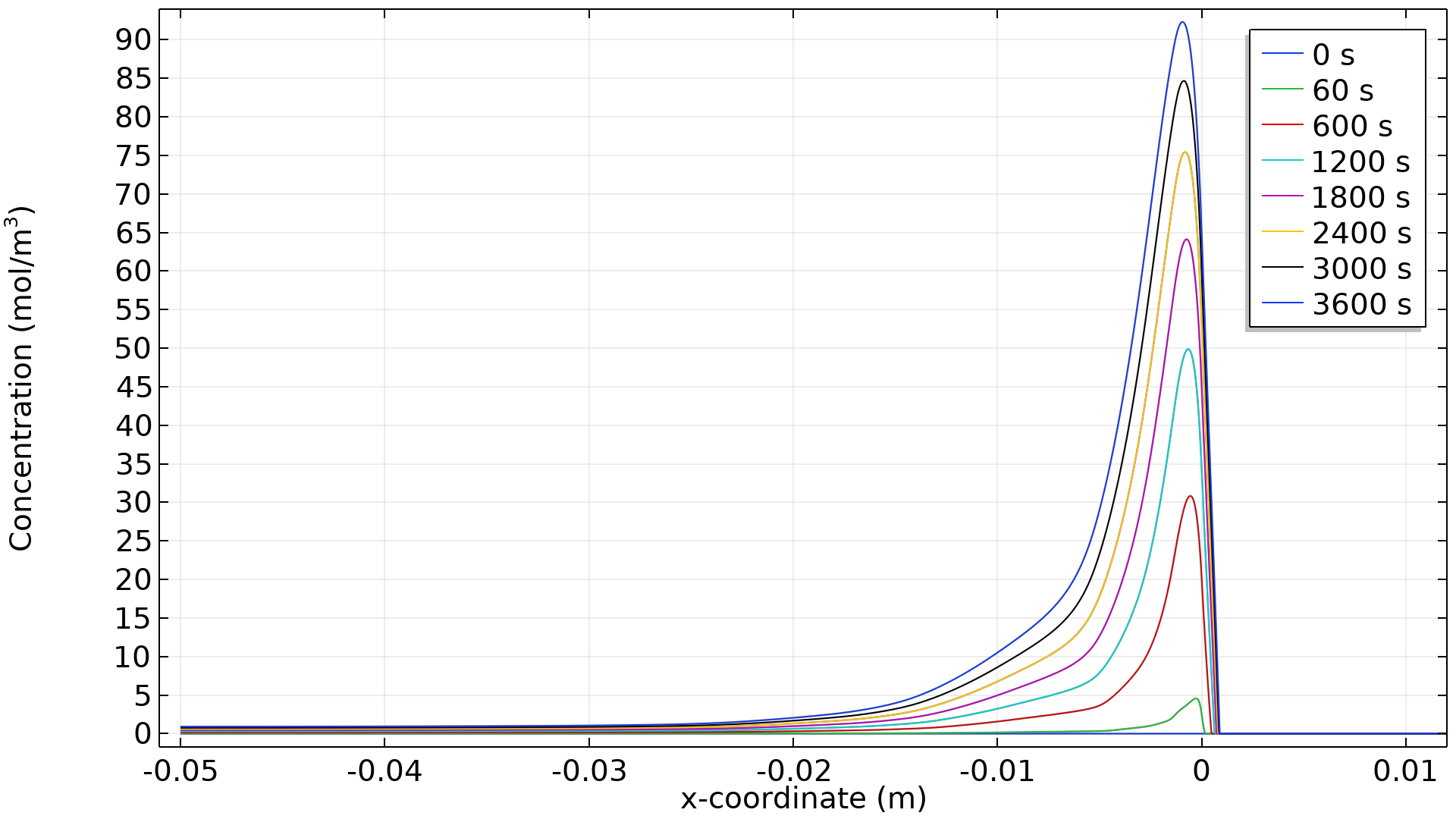support@comsol.com
Corrosion Module Updates
For users of the Corrosion Module, COMSOL Multiphysics® version 6.1 provides an improved Continuity condition for assembly geometries with identity pairs, a new feature for modeling dissolving metal electrodes, and support for nonideal activities. Learn more about these updates below.
Improved Continuity Condition on Assembly Pair Boundaries
Assembly pairs are typically used when nonmatching mesh elements are used on each side of a boundary. The need to use assembly pairs may arise when using, for instance, swept meshes in complex 3D geometries. In version 6.1, the Continuity boundary condition for potential dependent variables (for both the electrode and electrolyte phases) of assembly pair boundaries has been significantly improved in terms of accuracy and numerical stability in the Current Distribution interfaces and the Cathodic Protection interface.
New Sacrificial Anode Surface Node
For the Cathodic Protection and Secondary Current Distribution interfaces, there is a new Sacrificial Anode Surface node. This feature can be used on boundaries to model dissolving metal electrodes in corrosion protection applications, similar to the previously available Sacrificial Edge Anode.

Nonideal Species Activity Coefficients
Version 6.1 introduces functionality for modeling nonideal electrolytes using Debye–Hückel theory. In such electrolytes, even a small variation in concentration — in the millimolar range — may cause measurable changes in quantities such as pH and electrode equilibrium potential. The ability to account for nonideal effects in modeling and simulation is therefore an important addition to the electrochemistry interfaces. In this version, it is now possible to include these effects in the Tertiary Current Distribution, Nernst-Planck and Transport of Diluted Species interfaces. The activity coefficients may be defined using either the Debye-Hückel species activity or user-defined expressions.
Advanced Chemical Formulas
It is now possible to use more advanced formulas for chemical species and chemical reactions. The enclosing marks (),[], and {} can be used to indicate structural units in the molecular formula in a coordination complex, for example. To improve readability, simplified names can be used in the reaction formula to indicate an entire species or a part of the molecular structure. When reaction balancing is performed, the complete composition and charge is considered.
New Tutorial Models
COMSOL Multiphysics® version 6.1 brings three new tutorial models to the Corrosion Module.
Atmospheric Corrosion with Mass Transport
Application Library Title:
atmospheric_corrosion
Corrosion Inhibitor Transport

Application Library Title:
corrosion_inhibitor_transport
Alternating Current-Induced Corrosion

Application Library Title:
ac_corrosion

